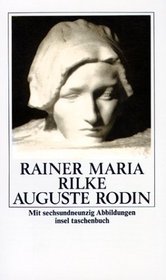Search -
Auguste Rodin
Auguste Rodin
Author:
Sculptor Auguste Rodin once wrote that "one has only to look at a human face to find a soul, no feature deceives; hypocrisy is as transparent as sincerity. The inclining of the brow, the least furrowing of a look may reveal the -secrets of the heart." Rodin was fortunate to have as his -secretary Rainer Maria Rilke, one of the most sensitive poe... more »
Author:
Sculptor Auguste Rodin once wrote that "one has only to look at a human face to find a soul, no feature deceives; hypocrisy is as transparent as sincerity. The inclining of the brow, the least furrowing of a look may reveal the -secrets of the heart." Rodin was fortunate to have as his -secretary Rainer Maria Rilke, one of the most sensitive poe... more »
ISBN-13: 9783458324669
ISBN-10: 3458324666
Publication Date: 12/31/1998
Rating: ?
ISBN-10: 3458324666
Publication Date: 12/31/1998
Rating: ?
0 stars, based on 0 rating
Publisher: Insel Verlag Anton Kippenberg
Book Type: Turtleback
Other Versions: Paperback, Hardcover
Members Wishing: 0
Reviews: Amazon | Write a Review
Book Type: Turtleback
Other Versions: Paperback, Hardcover
Members Wishing: 0
Reviews: Amazon | Write a Review
Genres:




